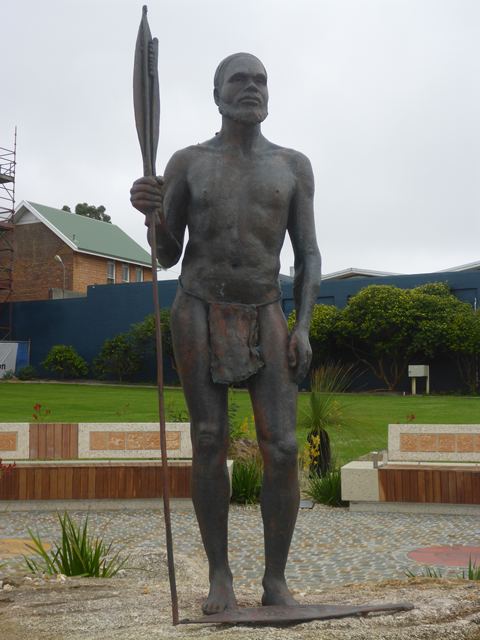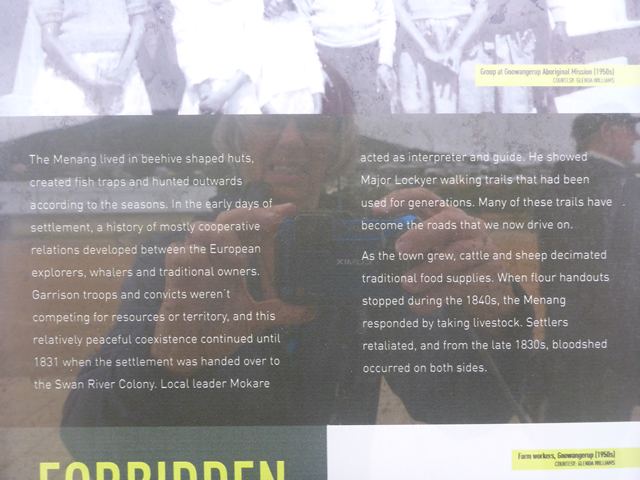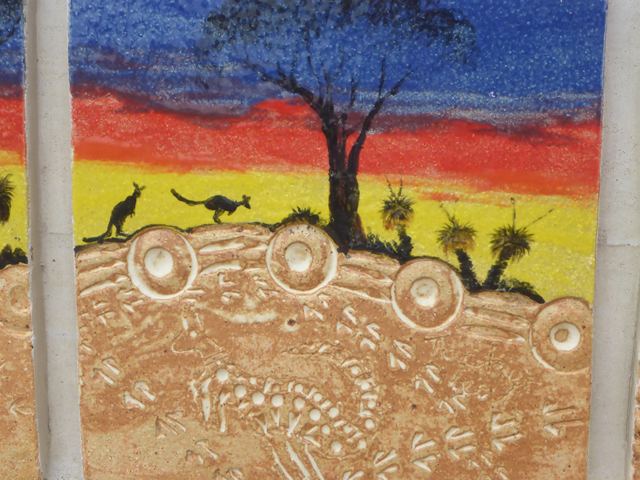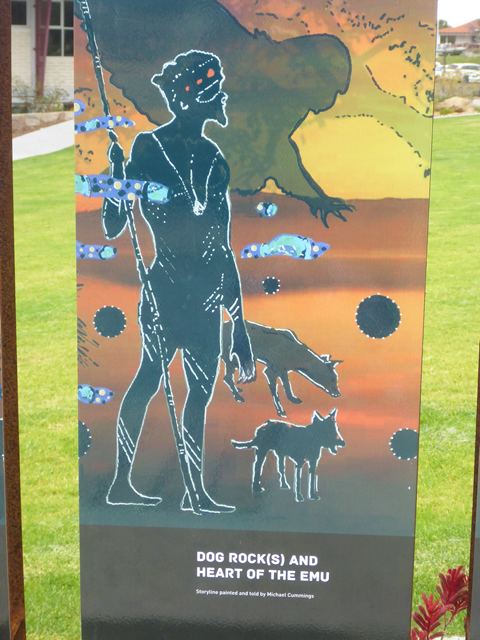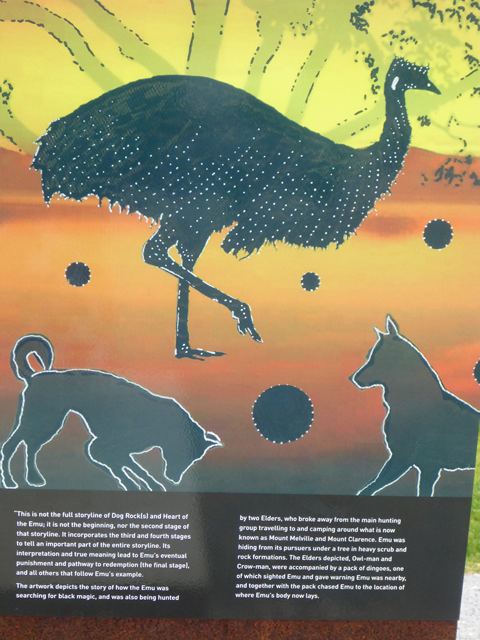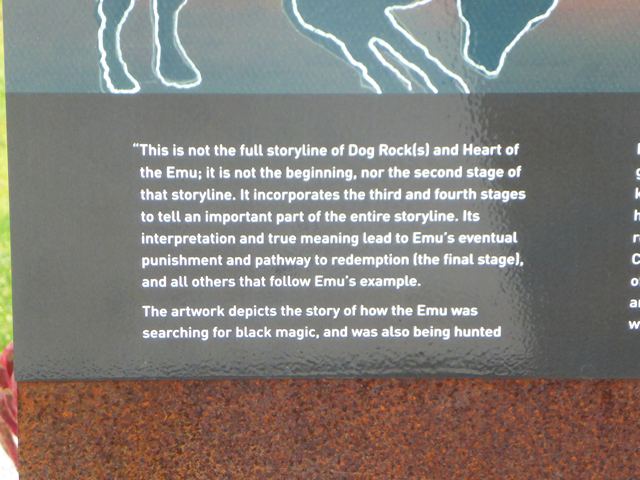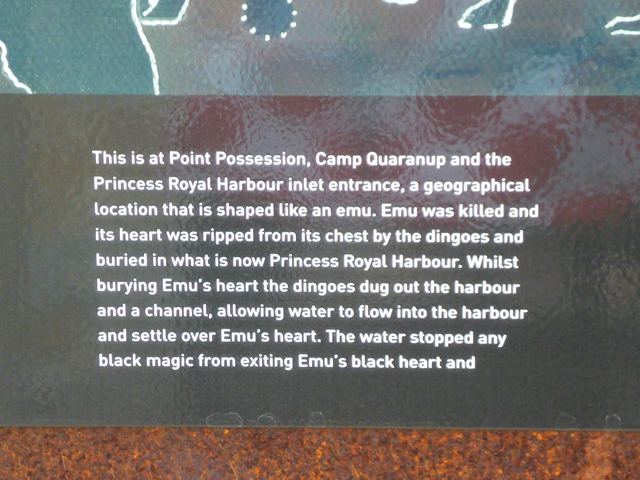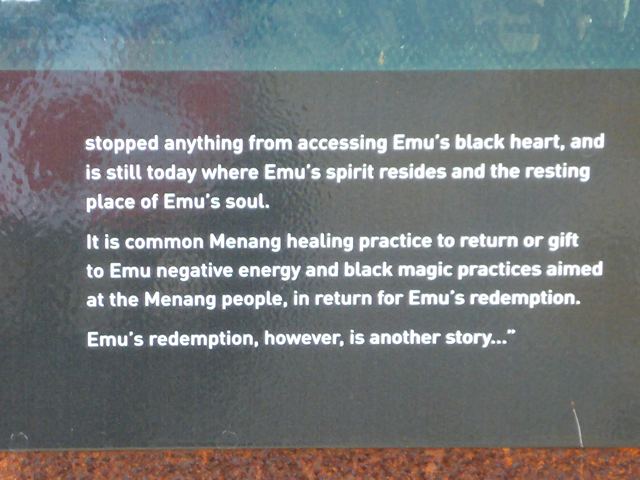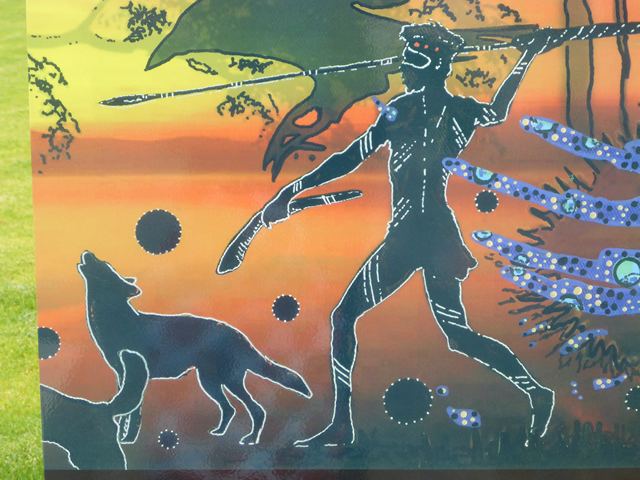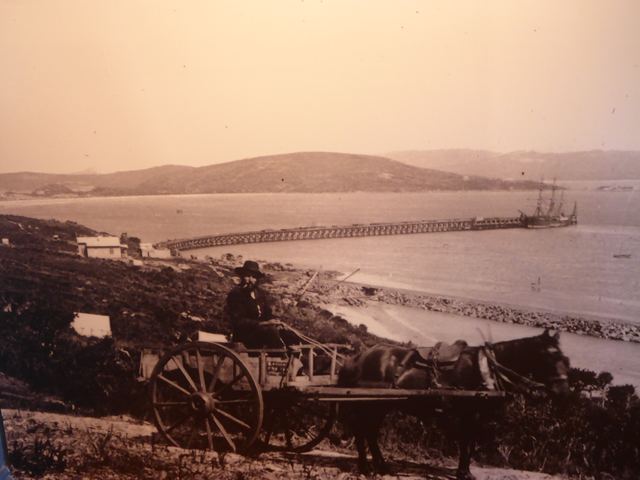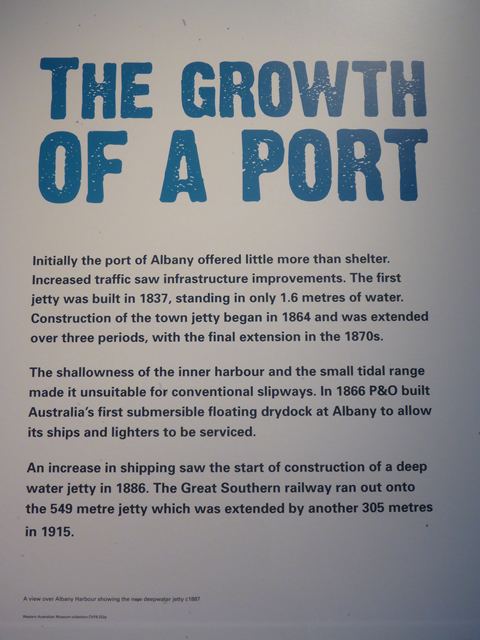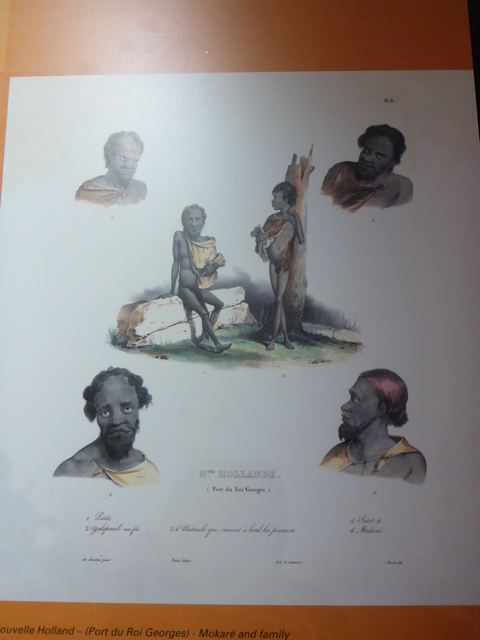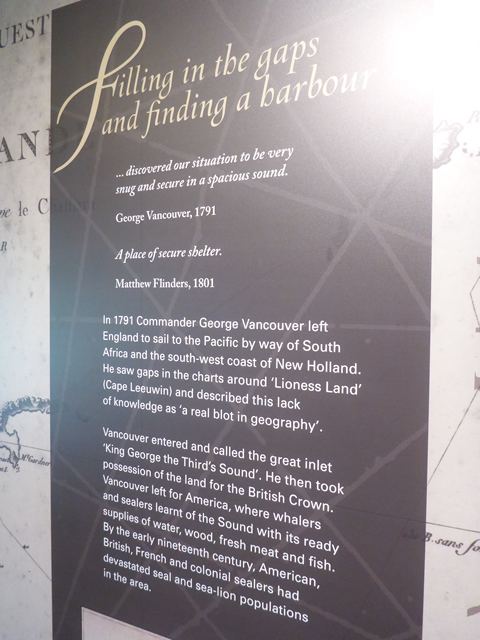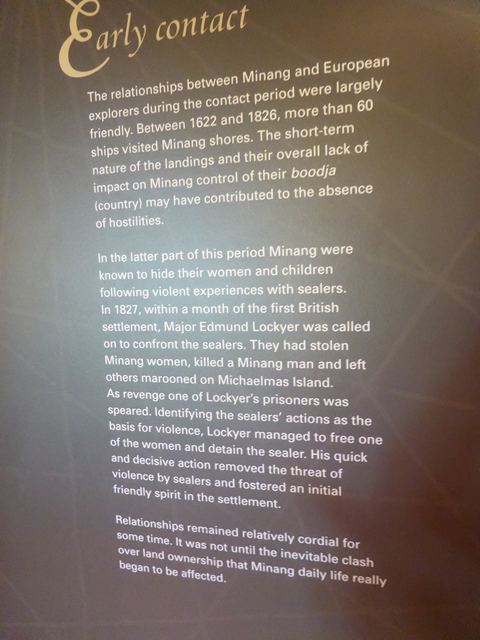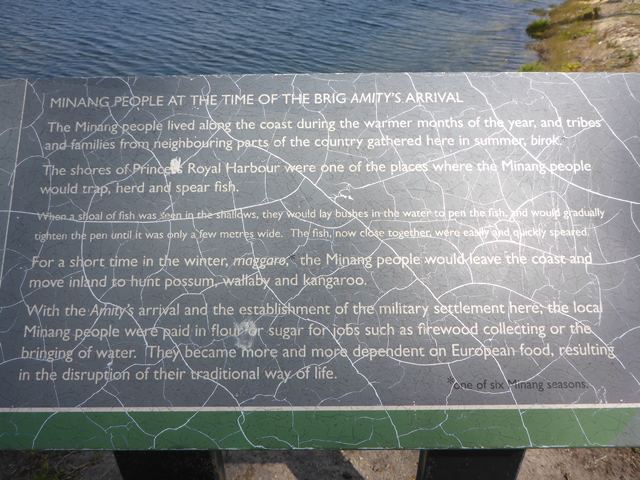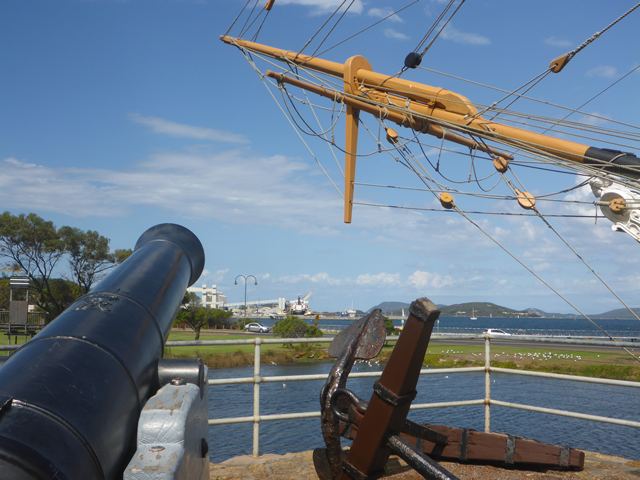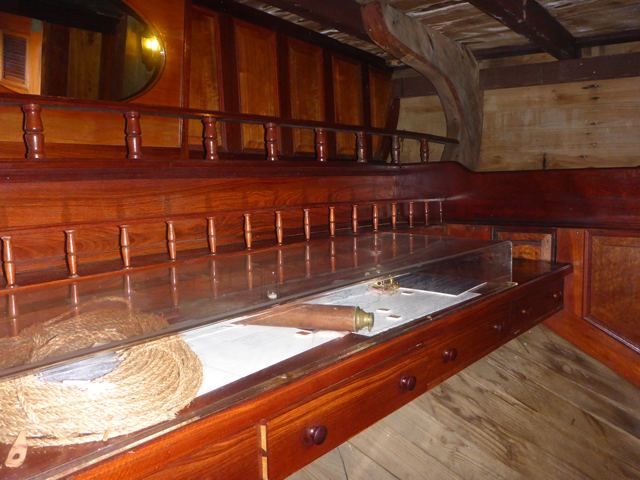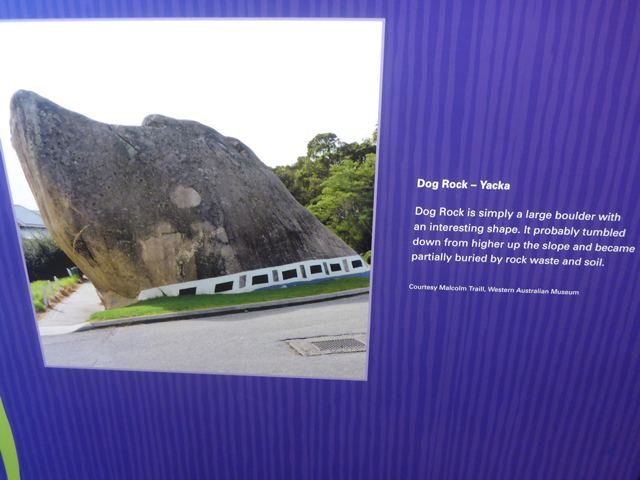2020 Aus Vancouver Mokare and Lockyer

|
Zoonies Layup position 34:59.66S 117:56.56E Vancouver Mokare and Lockyer The founders of Albany In 1791 Commander George Vancouver sailed amongst the whales into the sheltered waters that he immediately named after King George the Third (Sound) and approached the inner harbour where the Southern Ocean swell and free winds are left behind, replaced with a vast area of shallow water and sandbanks, and teeming with seals and sea lions, which he named Princess Royal Harbour. He stayed a while anchored off a natural amphitheatre of hills enclosing a perfect place for future settlement with a plentiful supply of wood, game and water. He then sailed on to North America and broke the news and soon the sea-hunters of England, France and America were busy with their deadly business of supplying the Northern hemisphere’s insatiable need for furs, oil, meat and bone. Whale numbers have recovered but the same cannot be said for the seals and sea lions. Ten years later our friend Matthew Flinders dropped the hook here, off Point Possession and carried out many observations of the magnetic variations in the area which were affected by the granite base of the surrounding rocks. He compared the observations on board to those taken by his men from their tents ashore and took the mean between the two, “I conceive it will not be far wrong if taken at 7 degrees west.” He also made some useful discoveries about tides. There being little tide running in either of the two harbours but a swift current flowing between the two in the narrow entrance. Also he discovered there was only one HW in 24 hours, occurring sometime between 6pm and midnight in the 16 days of his observations. He also compared his depth soundings to Captain Vancouver’s at the entrance to Oyster Bay where we traversed for that lovely night moored before Zoonie was lifted at Emu Point. Matthew found only thirteen feet where Vancouver had plumbed to seventeen. On approach our depth went down to around the same but the centre of the channel further in has obviously been dredged since as we had 24 feet. These depth variations compared to Vancouver’s were the greatest disparity between the two in their surveying of the area and stand as testimony to Matthew’s diligent pursuit of the high standards of accuracy. Having taken on nature’s supplies he continued eastwards close to the shore so that no river or entrance would escape his detection. I digress, so back to the early beginnings of Albany. In 1826 the British Brig Amity was commissioned to transport 21 soldiers, 23 convicts (cheap labour), officers and seamen and Major Edmund Lockyer, his wife and eleven children to establish the new settlement. He became the first Commandant for five months. On the way around from Sydney in November the brig was hit by storms and was forced to put into George Town on the north Tasmania coast where Bron and Ken live and where we spent Christmas, to take on supplies and carry out repairs to her sails. She didn’t have the same agreeable sail we had across the Bight, instead arriving in King George Sound on Christmas Day after a rough six week crossing poor things. As she sailed into Princess Royal Harbour she flew her colours and fired her gun and thus Major Lockyer made the first official claim on behalf of the British Crown to domination over the whole Australian continent. Heady stuff. Soon Edmund Lockyer met Mokare of the Menang Boodja Noongar people who learned English, maybe from Edmund or his wife and acted as interpreter and guide teaching him the Dreamtime stories and acting as the perfect host, showing him literally the lay of the land and the walking tracks, many of which are the modern day roads. Early relations between the aborigines and Foreigners were good not least because of Edmund’s fair-minded and even tempered nature but also because the whaling and sealing industries did not encroach upon the available land in the area, leaving the Menang people to continue their way of life. As soon as the population grew in response to the abundance of valuable land resources and the need to farm crops for food the conflict began. It must have been a major disappointment for Edmund to see the destructive decline in relations after such a promising start with their accommodating hosts. In the picture of Mokare’s family you can see how they were displayed in mocking, demeaning caricature at the time to re-inforce the colonial concept of seeing them as ignorant savages in need of reform and civilising. Also in the recent picture of the Dog Rock(s), which is an essential part of their Dreamtime story, the description uses the loaded word ‘simply’ a large boulder, by which combined with giving this purely geological description, is the writer ignorant of or purely dismissing its cultural importance to the Menang people? As for the original brig Amity she started life in New Brunswick, Canada and worked around Scottish and Irish waters before making her way to Hobart. This little oceanic workhorse not only transported live and deadstock all over the new colonies but also rescued survivors from the convict ship, the Royal Charlotte after she grounded herself on the Great Barrier Reef. Amity (friendship) was instrumental in the founding of the convict settlement now known as Brisbane and she took supplies to the new settlement at the Swan River, today’s Perth. After she left King George Sound she became a supply ship for a while and later she was based back in Hobart as a whaling ship. She also transported sheep and cattle to new colonies but in June 1845 her long career came to an end in a storm when she rode up onto a reef off Flinders Island. Her crew were all rescued by a sealing party but she became a total wreck and her remains have never been located. Ken might have an idea where she is, he’s lived for forty years on the island! One man, Stan Austin took on the task of building her replica between 1975/6 to the exact scale of the original but without the benefit of plans. She is based on a snow brig design with a small trysail immediately behind the main mast. Stan supplied most of the materials and did a lot of the work himself as part of his vision to remember the town’s small beginnings and in so doing allowing us to learn about them too. What a gift.
|
